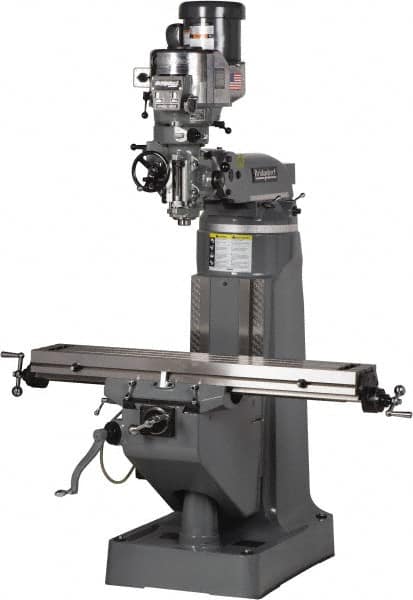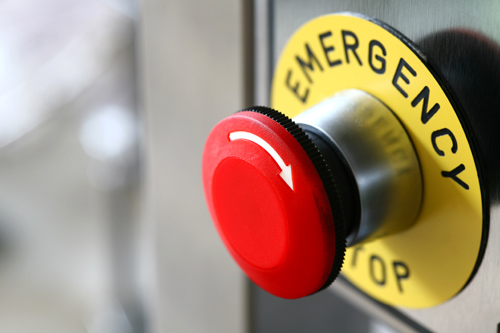Fabrication
Shop Attire/ General Procedures
- Safety Glasses will be worn by all team members while in work spaces, or while using either hand tools or power tools.
- Team members will wear only closed toed shoes while in any of the work spaces, and will wear non-synthetic materials if welding.
- Team members will tie back or remove loose hair and jewelry before entering work areas, and baggy or loose sleeves will be rolled up.
- Team members will wear long pants while performing any machining operation, to reduce the risk from flying chips.
Tools
- When using Lathes or Mills in the Machine Shop, team members will…
- Team members will use the machine shop Machines only under supervision of technicians or faculty, during the times provided.
-

https://www.mscdirect.com/product/details/92813351
Team members will defer to the judgement of technicians regarding the machinability of designs.
- Parts will only be fabricated after a dimensioned drawing has been approved, meeting the ME210 standards.
- Team members will not use cellphones while in the machine shop.
- Safety glasses will be worn, and all clothing and hair requirements will be followed by all team members when they are in the
- machine shop, regardless of whether or not they are using the machines.
- When using Power Drills, team members will…
- Always clamp loose parts to a workbench before drilling.
- Turn off, unplug, and wait for the bit to fully stop rotating before changing bits
- Always use a sharp and material appropriate bit.
- Never start the drill with the bit already in contact with the work surface.
- When Using the Angle Grinders, Team Members will…
- Always clamp loose parts to a workbench before grinding.
-

https://www.powerbuilt.com/products/5-in-10a-angle-grinder
Turn off, unplug, and wait for the tool to fully stop rotating before changing tools.
- Always wear a face shield while grinding
- Check the work area for fire-hazards before grinding
- Check the abrasive wheel for damage before grinding.
- Check that the grinder is set to a lower RPM than the wheel’s max RPM before grinding
- Check that the correct guard is installed on the grinder before grinding
- Never start the grinder with the abrasive wheel already in contact with the work surface.
- Check that parts are cold enough to touch by hovering the back of a hand above them before handling, or wear gloves.
- When using Dremel tools team members will…
-
- Always clamp loose parts to a workbench before applying the dremel tool.

https://www.amazon.com/Dremel-3000-2-28-Attachments-Accessories/dp/B005JRJE7Y
- Turn off, unplug, and wait for the tool to fully stop rotating before changing it.
- Wear a dust mask when using the dremel on a material that produces fine particulates.
- Check that parts are cold enough to touch by hovering the back of a hand above them before handling, or wear gloves.
- Always clamp loose parts to a workbench before applying the dremel tool.
-
- When using a Soldering iron team members will…
- Remain conscientious of where the hot tip is at all times, and keep it clean with a wet sponge.
- Return iron to stand when not in use, even if it is cold.
- Remove all flammable materials from the work area.
- Avoid inhaling directly over the workpiece.
- Only use lead-free solder, and always wash hands after soldering.
- Remember to unplug the iron after use.
- When Using Potentially Dangerous Chemicals, including Paints, solvents, glues, cleaners, hydraulic fluids, ect, team members will…
- Dispose of them in accordance with environmental requirements from Lafayette’s Chemical Hygiene Plan.
- Dispose of them in accordance with Federal, State, and Local regulations.
- Keep a Material Safety Data Sheet for each material, in the place it is being stored and used.
- When Welding, Team members will…
- Only weld alone if they have been certified by a supervising technician.

https://www.amazon.com/YESWELDER-Welding-Replacement-Clarke-Stinger/dp/B07MM13DZ2
- Remove all flammable materials from the work area, and dry off any wet surfaces.
- Turn on fume extraction fan, and wear welding helmet, sleeves, and gloves while in the welding area.
- Inspect equipment, including electrode holder, hood, sleeves and gloves, and set machine to proper current and voltage.
- Put up welding curtains to protect bystanders.
- Wear safety glasses beneath helmet while welding.
- Only weld alone if they have been certified by a supervising technician.
Testing
Programing
- While troubleshooting the code, all team members will stay out of the way of any moving parts until the code has been thoroughly tested and approved.
- While troubleshooting the code, the team member(s) behind the computer will always inform the other team members before updating any code.
- The programming will allow for a ‘limp’ state where power is cut off from all motors, and the fingers can be adjusted manually.
- If no E-stops are depressed, or other safety catches activated, the programming will start with a ‘safe’ mode after turning on where the hand goes limp.
Wiring
- Before any adjustments are made to the electronics on the device, it will be fully detached from any power source.
Physical Design

https://blog.ansi.org/2015/10/safety-of-machinery-emergency-stop/#gref
- The robot’s design will include at least two E-stops, so that both the robot operator wearing the data glove, and anyone near the hand itself can stop the hand from moving at any time.
- The robot’s design will include a physical activation from out of the ‘safe’ mode, that will require the simultaneous use of two buttons, keeping the operator’s hands away from any pinch-points, similar to an industrial press.
- The had itself will be built on a sturdy platform, heavy enough to prevent it from falling over, under reasonable, anticipated conditions.
Third Parties
Ordering Parts
- Team Members will always use official Lafayette email addresses when communicating with third parties.
General Pandemic Safety Guidelines
- Team members will adhere to Lafayette college rules regarding mask-wearing, necessary distancing, and quarantining policy.

https://aemtek.com/product/disposable-face-masks-pack-of-50/